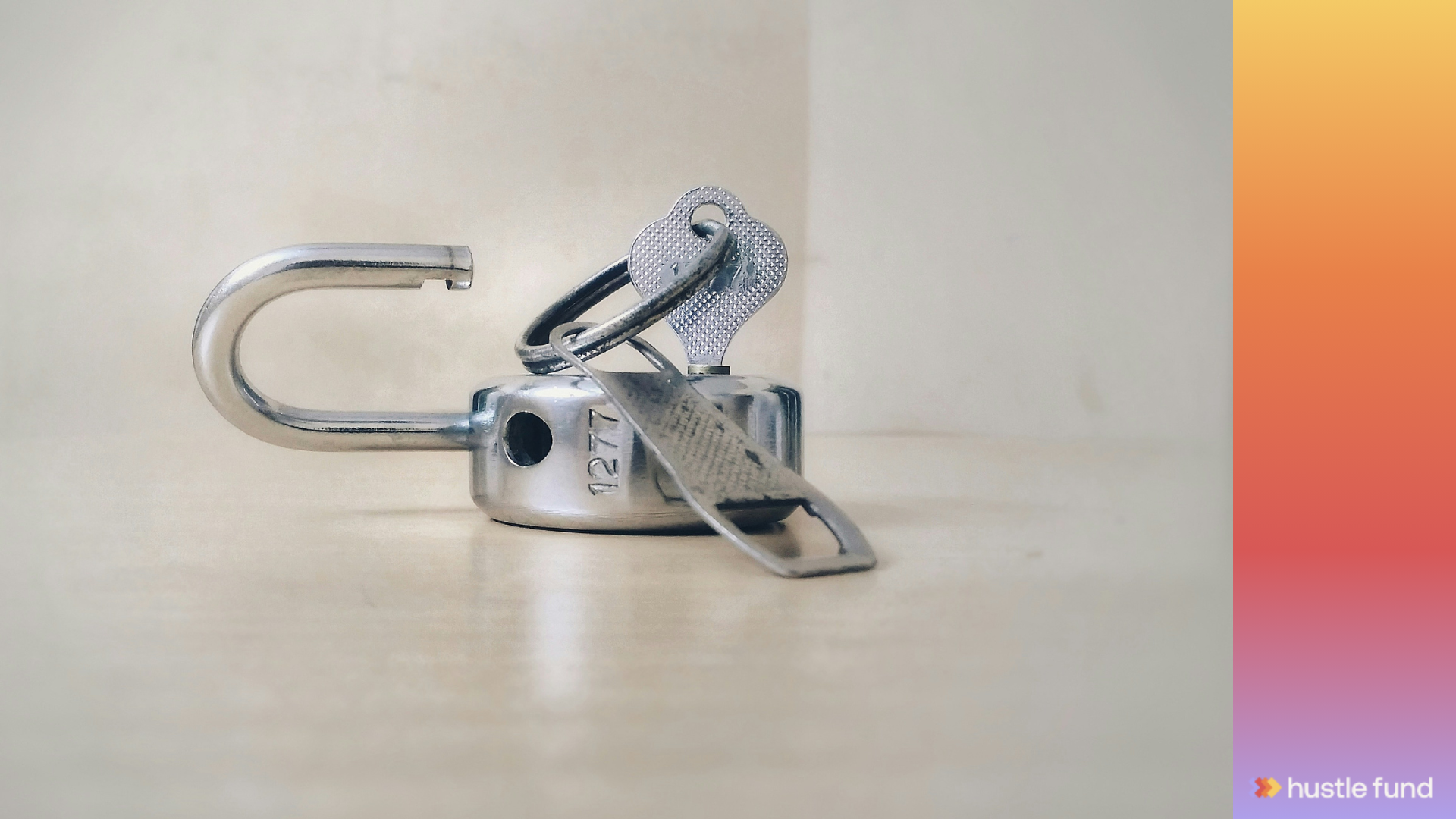A Deep Dive into the Secondaries Market
.png)
Brian Nichols is the co-founder of Angel Squad, a community where you’ll learn how to angel invest and get a chance to invest as little as $1k into Hustle Fund's top performing early-stage startups
A few weeks ago, I got curious about what happens when an investor wants to sell their shares in a company before that company has an exit. You can find that article here. The process of writing that article left me with even more questions. Somehow, I got the incredible opportunity to dig deeper by interviewing secondaries legend Ryan Logue.
Ryan has been leading transactions in the secondary space for over a decade. His experience brought him from SecondMarket to Nasdaq to Morgan Stanley to (most recently) LTSE, where he’s the head of Private Market Solutions.
LTSE (Long Term Stock Exchange) was started by Eric Ries. (Yes, that Eric Ries.) They do a lot of things. But Ryan is focused on connecting later-stage companies with long-term oriented investors (think pensions, family offices) with the goal of long-term profit maximization.
That was a mouthful.
Let’s just say that Ryan is an absolute legend when it comes to the secondaries market. He knows everything about this space, and generously shared some of his knowledge so that I could pass it along to all of you.
🔥 Here’s what we’ll cover today:
- How the secondary market came to be such a big thing
- Tender offers: what they are, how they work, and why
- Pricing and discounts
- How to find a buyer outside of a company-led round
Let’s dive in.
The rise of the secondary market
Back in the day, early-stage investing was a 5-7 year game. VCs and angel investors expected to see an exit event (IPO or acquisition) within 5-7 years. But nowadays it’s normal for private companies to stay private longer. Like, 10-20 years before an IPO. Uber, Airbnb, and Nerdwallet are just a few examples of this trend.
Now, obviously any early investors in those companies that hung onto their shares through the IPO did incredibly well. But not all investors can wait for over a decade to get a return.
VCs need to return money to their LPs in order to keep fundraising (and stay alive). Plus, most VC funds expire after 10 years. And that means the VCs need to realize a return before the fund expires, or transfer their shares out of the fund and into the hands of their LPs.
For angel investors, waiting over a decade to see an ROI may be an option. But if most of your net worth is tied up in one company’s paper gains, that can be scary. Most angels want to diversify their assets, invest in new startups, pay off debt, or move to Napa and become winemakers.
You know … investor things.
You know who else wanted to cash in their shares early? Employees. They wanted to go start their own company. Or buy a house. Or pay their student loans. Or take a vacation. Companies realized it was unrealistic to ask their earliest investors – people who believed in them long before the company had product/market fit – to wait 10+ years for a return. And that’s where the secondary market came in.
The secondary market allowed VCs to return money to LPs. It enabled angels to invest in more great startups. It helped employees realize the benefits of contributing to the company’s success.
These days, companies see the benefit of allowing secondary liquidity. Many even proactively organize transactions to allow early shareholders a chance to take something off the table.
Let’s talk about tender offers
A tender offer is an offer to buy some (or all) of a shareholder’s shares at a set price and within a set period of time.
Let’s break that down.
Let’s say a company is open to allowing early shareholders to sell their shares. The company (let’s call it “Shmuber”) will send a notice out to a group of shareholders: “If you want, you can sell up to 25% of your shares at $100/share. This offer is valid for 30 days.”
Shmuber will likely offer this opportunity to a small group of shareholders to start. Depending on the volume of shares that are sold, the company might extend the same offer to another group of shareholders. Usually they’ll start with the employees. Then early VCs. Then early angel investors.
Here’s the other thing to know about tender offers: they usually take place in connection with a larger fundraise event.
So let’s say Shmuber is raising $250m. But they have $350m in interest. Shmuber might choose to either:
- Raise the full $350m and use $100m to buy back stock from pre-existing shareholders
- Raise only $250m and let outside investors make a tender offer directly to shareholders for $100m
This is a win for everyone:
- Early shareholders get their hands on a pretty meaningful amount of money. Remember, these folks got in at the earliest round. So they could be getting a 1000x return.
- The company is bringing in new investors without further diluting the cap table.
- More investors get access to the round.
How to price
If you’re an investor looking to sell your shares, and you’re not selling as part of a tender offer, the ideal scenario is to line up your sale with or just after the company’s fundraise. This is best for a number of reasons:
- The valuation is often made public, so the fair market price is easier to pinpoint
- Investors see that the company just raised a bunch of money, so they’re confident that the business has enough runway to operate for the foreseeable future
- Fundraises are often paired with good press – like the CEO announcing big revenue milestones – so investors have confidence in the company’s longevit
If the company hasn’t raised recently and doesn’t plan to raise soon, then your price is going to be largely determined by the company’s valuation at the previous round. The next question is… how much to discount?
The issue of discounts
Yep, secondary sales usually include some kind of discount.
See, when a company has an exit, the first people to get paid are typically the most recent investors. So if a company raises a Series D round, the Series D investors will get paid first if/when the company exits.
Common shareholders are usually the last to get paid. If you’re a common shareholder – like an angel investor or early employee – and you’re selling outside of a company-led round, your shares come with some amount of risk. So buyers will expect a discount. How much of a discount? It depends.
First, consider the market. In 2021, VC money was everywhere. Startup valuations were booming. And it was not unheard of for secondary shares to sell without any discount at all.
Some companies’ shares were even selling for a premium to their last round on the secondary market. That was an atypical year. Normally secondary shares will sell at about a 10-20% discount. In down years, secondary shares might sell for less than 50% of the company’s most recent valuation.
The thing is, companies don’t want their shares trading at 50%. That’s a bad signal that hurts the company’s reputation, which hurts their customer acquisition, which hurts their future fundraising efforts. To say nothing of their employee retention.
This is why, around the Series B stage, a lot of startups will put together language that blocks secondary sales unless they happen during a company event – like a fundraise or a tender offer.
Finding a buyer (angel investors, listen up)
Ok people. We’re almost at the end of this awesome information dump. Stay with me.
What happens if a shareholder wants to liquidate their shares outside of a company event? Tactically, how do they do that? The first thing Ryan suggests is going to the company before you find a buyer. Ask the CFO or CEO or whoever is in charge, “How do I do this?”
The company probably won’t help you find a buyer. It’s a lot of work without any reward. But they will tell you if you can do this, and how the process works.
What information can you share / not share with potential buyers? Do you need CEO approval? Board approval? Does the company have a “right of first refusal?” Those last few are important. If the company has a RoFR, that means they have the option to buy your shares at whatever price you agreed upon with your buyer.
If board or CEO approval is required to sell, the company may decide to block your sale altogether. Understanding these restrictions will be a key part of analyzing whether a sale on the open secondary market is even possible.
If you CAN sell your shares, the next step is finding a buyer. If you know a bunch of people on the cap table, you may find that one of them wants to buy your shares. That’s the simplest path.
If selling to an existing investor isn’t an option, next step is to go to a broker. The broker will be able to tell you if people are trading in this stock or not. If they are, the broker can help you find a buyer.
If the company is too small or not well-known enough to interest buyers, the broker will tell you that, too. In that case, your best bet is to hold onto your shares and hope for some kind of company event – a fundraise, a tender offer, a big press boost, etc.
Phew. That was a lot.
If you stuck with me ‘til the bitter end … well done. Go get a cookie. You’ve earned it.
And if you like learning about this kind of thing, think about joining us at Camp Hustle We’re gonna be hosting at least one breakout session on secondaries.
PS: a HUGE thank you to Ryan Logue for sharing his knowledge with me for this article. Ryan is not just kind and brilliant … he’s also working on some pretty awesome stuff at LTSE.













